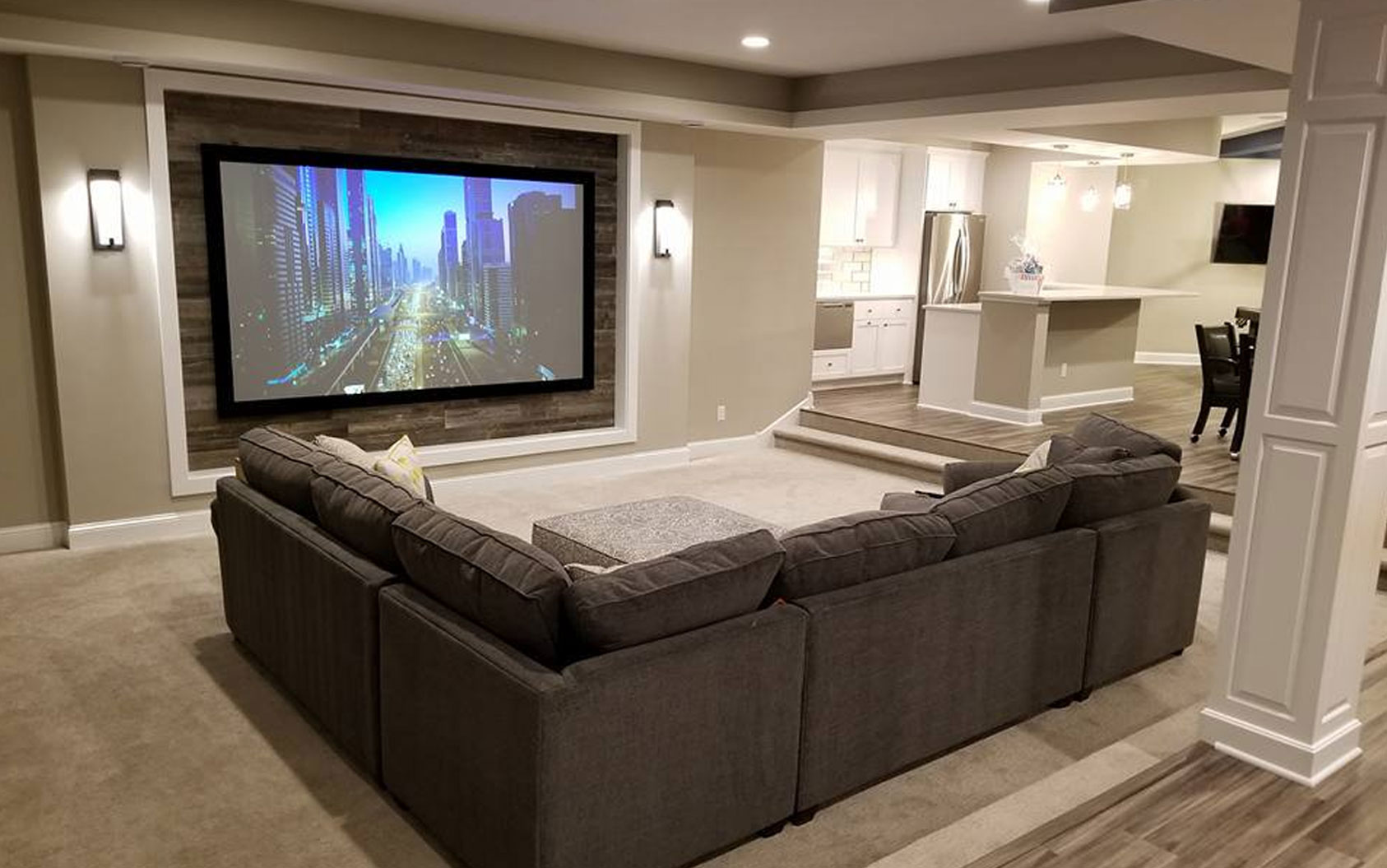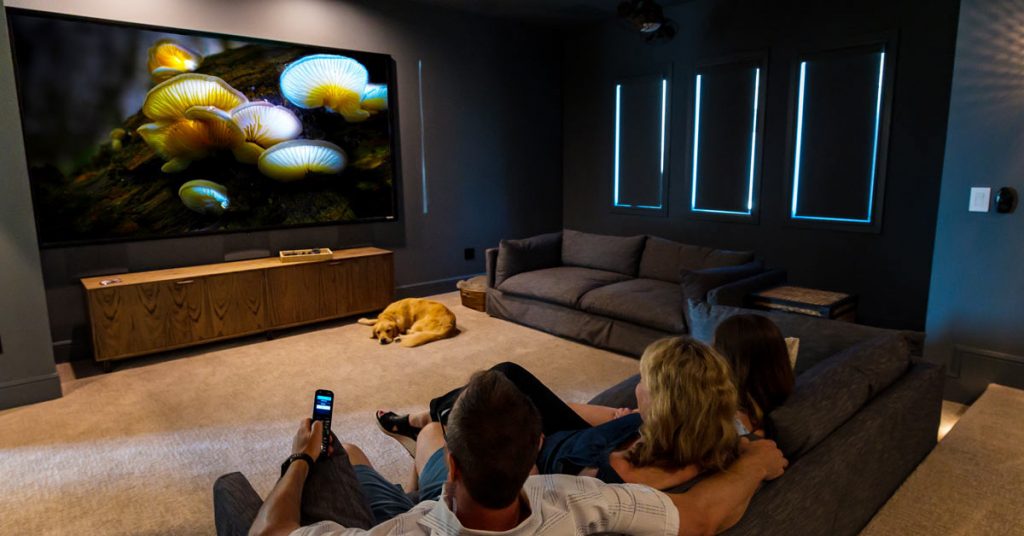Choosing the right projector screen can be overwhelming if you are not sure what to look for in a projector screen. When buying a projector screen, you must consider a few factors, like the color, size, material, and type of projector screen you need for your place. Also, you might need a few projector screen accessories and remotes to complete the purchase.
It is good to measure the place you are going to put the projector screen and the distance from the seats. You should not place a big projector screen too close to the seats because you might be unable to see the image in a good resolution.
Because it is not as simple as you wish, we have prepared a complete guide on what to look for in a projector screen and how to choose the best one based on the purpose and room space.

What to Look for in a Projector Screen?
When buying a projector screen, you must choose the right size. Then, select the material and color because not all materials and colors give the same effect. The most recommended projector screen color is gray or white, depending on the room’s light. The best material for a projector screen might be white blackout cloth because of its light absorption power.
The projector screen size for home cinemas often ranges between 100 and 120 inches. This projector screen size is perfect for most rooms, projectors, and sitting distance since it can provide a realistic cinema experience without extensively stretching the screen.
When it comes to color, most of you may think the white option is the best. But it is not. Because white and black projector screens might have contrast issues, the gray option came on the market in 2001.
The gray option has the benefits of both black and white colors, providing much better contrast and light absorption. The matte gray projector screen is suitable for both light and dark room environments and provides a better viewing angle.
When it comes to the material, you can use different fabrics for the projector screen. For example, the blackout cloth is the most recommended one, but you can also go with polyester, drop cloth, white sheet, and so on.
Screen projector types
The first thing the seller might ask you is what type of screen projector you need. There are multiple types of projector screens made to match different purposes.
Electric projector screens
This type of projector screen is often mounted on the wall, ceiling, or floor. They are operated by an electric motor that lowers or raises the screen. With the electric projector screen, you get a remote control to manage the projector’s position.
In most cases, electric projector screens are larger and suitable for conference rooms, bigger home theaters, and auditoriums. Electric screens are modern and provide flexible projection without hindering room usability.
Manual projector screens
Manual screens are inexpensive and smaller than the electric type. You can easily mount the manual projector screen because it is lightweight and simple to operate and does not require professional mounting support.
There is no remote control because you manually pull the screen and attach it to the desired height. To retract the manual projector screen, you simply release the mechanism and lift the screen to the case.
These projector screens might be excellent for home cinemas, classrooms, and smaller conference rooms. You can place this screen on the wall, ceiling, floor, or on a tripod.
Fixed frame projector screens
This type of projector screen is currently the most popular and best-selling screen. It is best for home cinemas and auditoriums as well as in other places where a permanent wall solution is needed.
This kind of projector screen comes fixed in a frame, and you just hang it on the wall without installation or electrical work requirements. This type of screen comes in two variants, a flat and curved one.
The curved fixed frame screens are the newest on the market, giving more aesthetic appeal and a full panoramic experience.
Other types of projector screens
You can also find a foldable and portable projector screen that can be mounted on a wall, frame, or tripod. Also, you can skip these screens and go with a projector screen paint on a flat and previously prepared free wall.

Screen projector color options
The best colors for a projector screen are black, white, and gray.
White screens have reflective properties and are mainly suitable for darker rooms.
Black screens are more light-absorbable and provide a more cinematic experience. The black color sharpens the image more than the white or gray projector screen options. Even if light enters your room, the black screen may still give you a good image contrast.
Gray screens are in the middle and are best for those who need a higher-contrast image. This might be the best option if you face some issues controlling the ambient light. Gray screens are an affordable option.
Screen projector material options
Electronic and manual screens are usually manufactured of hard materials that are mainly used to give you the best viewing experience. However, you might want to DIY a projector screen at home or need to choose material when buying framed or portable screens.
Blackout cloth
The blackout cloth takes the first place on the list. The surface of this material is generally matte white, but you can find other colors based on your preferences. This is a fairly inexpensive and durable option and provides an enjoyable viewing experience.
White sheet
A white sheet might be the most affordable and available option if you want to DIY a projector screen. The white sheet might work well but not best since it is usually thin and may damage the image quality and contrast.
Wall paint
The most popular option for making a home cinema is to paint an empty wall. If choosing this option, search for a Digital Image paint (white or gray).
Conclusion
If you wonder what to look for in a projector screen, the answer will be short. The three main things are the type, material, and color of the projector screen.
Good luck with the purchase!